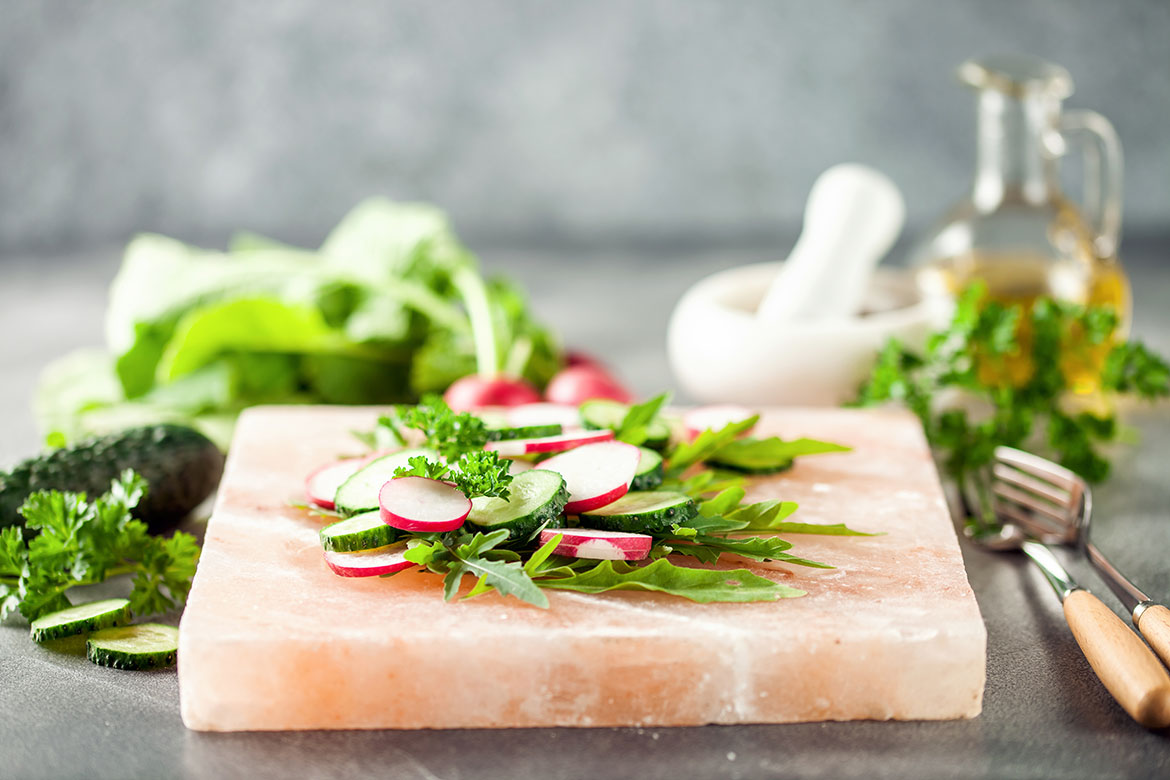Unravelling The Truth Behind “Why Did My Salt Block Explode”

Hey you! Yes, you, the one who’s on the other end of the screen. Are you asking yourself, “Why did my salt block explode?” if you are someone on the receiving end of such an explosion, don’t worry, it’s pretty normal. It’s not just normal; you can also avoid it.
Startled? Looking for an answer? If yes, stick with us longer; this blog explains why salt blocks explode and how to avoid the situation.
What Exactly Is A Salt Block
Let’s start by knowing a little bit about salt blocks. A salt block is simply a slab of salt. The block either contains Himalayan or sea salt.
Himalayan salt block benefits in many ways. Either for decoration, medical, or cooking purposes. Hence, there is a high demand for Himalayan salt blocks.
Nevertheless, most Himalayan salt blocks break during cooking. Moving ahead, we will explain some examples of when Himalayan salt blocks explode.
Also Read: Step into a World of Healing with Salt Therapies
Situations In Which Salt Blocks Explode
Many situations cause salt blocks to explode; here are a few
1. On grills
Who doesn’t want a hot steak? Everyone does. Unfortunately, grills are a major cause of salt block explosions. When the salt block heats, it explodes, leaving a mess. So, be careful when using a salt slab for grilling. This makes himalayan salt blocks for grilling a bad idea.
2. While cooking seafood
You put seafood on a salt block in the refrigerator. This is where you will see the side effects of himalayan salt lamps. A few minutes later, the cooling salt block explodes, creating a mess and damaging the refrigerator. Moreover, it also damages the dish by filling it with salt crystals, making it useless.
3. In homes
You cook mouthwatering sushi for your guests using a salt block. The moment you pour soy sauce, the salt block cracks and explodes, and everyone comes running in. Remember, salt crystals are sharp. Hence, they can cause injuries.
4. In restaurants
A restaurant provides a tableside dining facility. When cooking in the facility, the salt block explodes and causes panic among the customers. The salt crystals also cause injuries, leading to a bad reputation for the restaurant.
These are a few situations where salt blocks explode. But the main question remains, what exactly causes these explosions? We will discuss this further.
Reasons For Salt Block Explosions
We saw situations where salt blocks exploded; let’s look at what causes these explosions.
1. Level of moisture
Salt blocks, particularly Himalayan salt blocks, contain lots of moisture; the moisture accumulates and causes an explosion.
2. Fluctuating temperature
Salt blocks, particularly those used for cooking, experience rapid temperature changes. These temperature changes cause thermal stress, which causes the block to explode. Therefore, when you take a salt block for cooking, gently raise the temperature. Otherwise, you may end up in a messy situation.
3. Quality of the block
When you buy a salt block, ensure that you have a high budget. Cheap salt blocks may sound good, but they come at a price. The low quality is a major cause of explosions.
4. The thickness of the block
The larger the block, the more time it takes to cool down or heat up. So, if you think thicker salt blocks are hardy, think again. Thick salt blocks take time, and cool unevenly, which causes the surface to break, causing an explosion. They say that moderation is key. The same is true for salt blocks. Don’t go for too big or too small. Stick to the medium size.
Some Tips To Prevent Salt Blocks From Exploding
1. Gradually heat, and cool the block.
Heat and cool the block slowly to prevent the salt block from exploding. Don’t put the block on a hot surface immediately. Instead, place the block on a cold surface and heat it slowly on a stove or a grill. Similarly, on the flip side, once you are done with your cooking, allow the salt block to cool down naturally, then rinse it with water.
2. Don’t compromise on quality.
Never go for cheap salt blocks. In the case of salt blocks, cheap means compromising on quality, which is not good, when it comes to salt blocks. Instead, save money, and look for a good quality salt block from a reputable supplier. You can find good salt block suppliers on social media. Just look at the reviews, and then make your decision.
3. Handle properly
salt block cooking is a great idea. However, handling a salt block with care is important, yet hard. When you buy a salt block, make sure you treat it like a baby. To be honest, these look like blocks, but they are not as hard as them. Therefore, keep them in a safe place, out of children’s reach. Moreover, make sure that you don’t drop it yourself.
4. Size and thickness
When cooking with a real himalayan salt lamp block, make sure you give the block time to cool. Larger blocks take more time to cool. Hence, don’t rush and put them under a tap of water just to get done with it.
5. Inspect time and again.
Keep the salt block in check. Salt blocks are not concrete. They require care and maintenance to make sure that you get the best results. himalayan salt blocks for walls require keeping it dry and giving them the right temperature.
Also Read: Glow Up Your Life: The Power of Himalayan Salt Lamps
Conclusion
salt block recipes are a great way to kick off and blow off some steam. However, the pink salt lamp benefits require careful care for the best results. So, get a good supplier that offers the best salt blocks, and prevent them for breaking, and don’t subject them to sudden temperature fluctuations.
